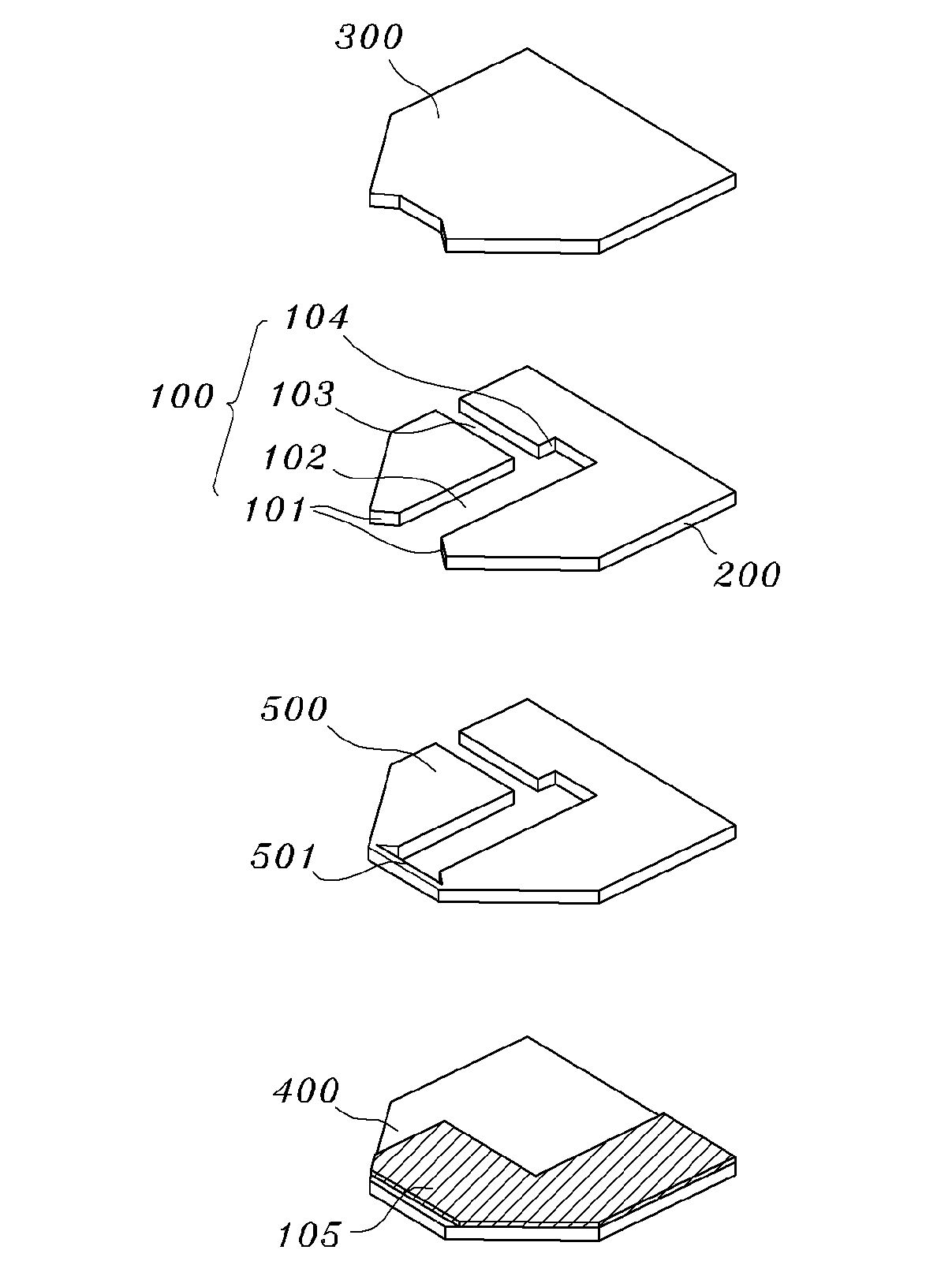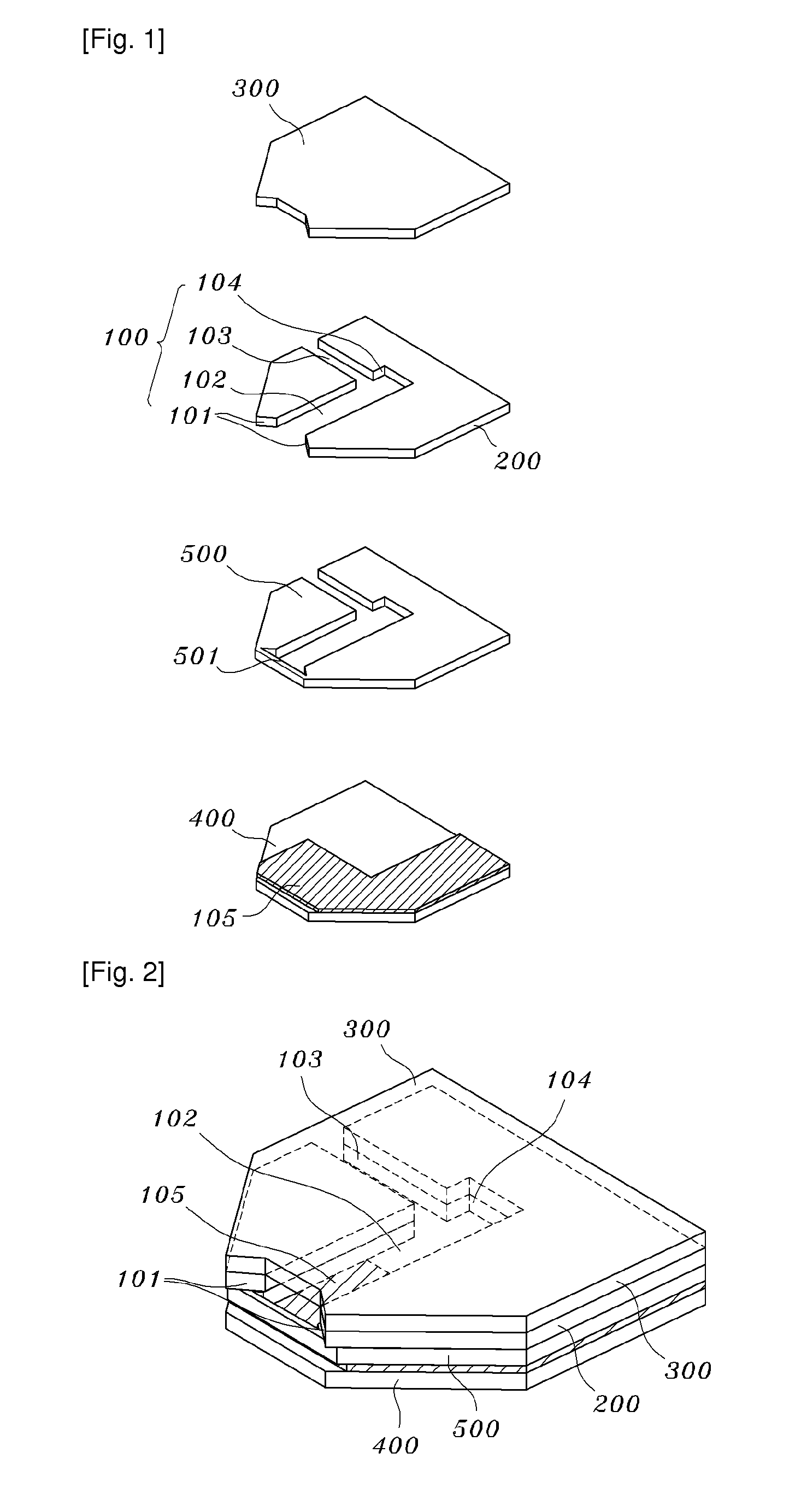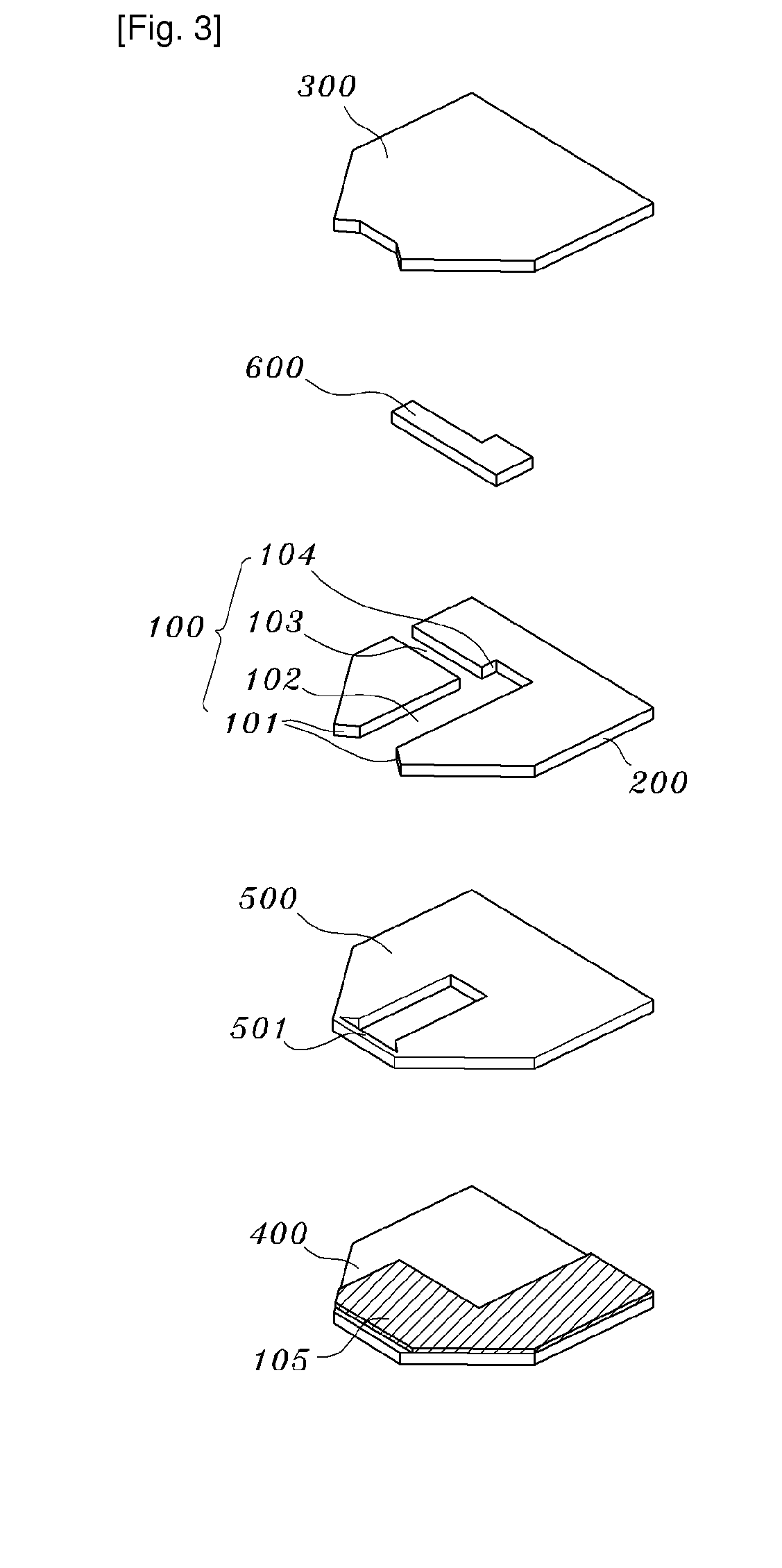Electrochemical biosensor with sample introduction channel capable of uniform introduction of small amount of sample
a biosensor and sample technology, applied in the field of electrochemical biosensors with sample introduction channels, can solve the problems of inconvenient use, inability to introduce samples in a constant amount, and inability to uniformly prepare samples, etc., to achieve high reproducibility and reliability, and ensure the effect of mass production
- Summary
- Abstract
- Description
- Claims
- Application Information
AI Technical Summary
Benefits of technology
Problems solved by technology
Method used
Image
Examples
example
Fabrication of Biosensor
[0066]The same working electrode and electrical connection shown in FIG. 5 was constructed by screen printing carbon paste, followed by thermal treatment at 140° C. for 5 min. Then, silver paste was screen printed on the end of the electrical connection to the same thickness as that of the middle plate so as to complete a circuit connection. As for the electrode of the upper plate, carbon paste was screen printed and thermally treated under the same condition as in the electrode of the lower plate, to afford a reference electrode which also served as an auxiliary electrode. At the end of this reference electrode, a circuit connection was formed with silver paste so as to complete the construction of the upper plate electrode.
[0067]A piece of polyester-based double-sided tape was press-molded to have the same sample introduction channel shown in the middle plate of FIG. 5, which was composed of a sample entrance, a sample passage, an air vent and a void space....
experimental example
Effect of the Sample Collection Barrier at Sample Entrance on Analysis Accuracy of Biosensor
[0070]The sample collection barrier provided at the sample entrance of the biosensor was assayed for its effect on the analysis accuracy of the biosensor as follows.
[0071]Three blood samples were measured for glucose level (mg / dl) using a measuring apparatus typically used in hospitals (YSI 2300 stat plus), and the glucose levels thus measured were set as reference values. Separately, the blood samples were applied to the conserve-type biosensors fabricated in Example and Comparative Example to quantify glucose levels. This quantification was repeated five times, and the mean values, coefficient of variation, and standard deviation were calculated and are summarized in Table 1, below.
TABLE 1Glucose Levels(mg / ExampleComparatiave Exampledl)Sample1Sample2Sample3Sample1Sample2Sample3Reference Values9720949897209498Strip 19720849389218479Strip 29620349092216484Strip 39620749494208502Strip 49721049...
PUM
| Property | Measurement | Unit |
|---|---|---|
| cell structure | aaaaa | aaaaa |
| hydrophobic | aaaaa | aaaaa |
| area | aaaaa | aaaaa |
Abstract
Description
Claims
Application Information
 Login to View More
Login to View More - R&D
- Intellectual Property
- Life Sciences
- Materials
- Tech Scout
- Unparalleled Data Quality
- Higher Quality Content
- 60% Fewer Hallucinations
Browse by: Latest US Patents, China's latest patents, Technical Efficacy Thesaurus, Application Domain, Technology Topic, Popular Technical Reports.
© 2025 PatSnap. All rights reserved.Legal|Privacy policy|Modern Slavery Act Transparency Statement|Sitemap|About US| Contact US: help@patsnap.com



